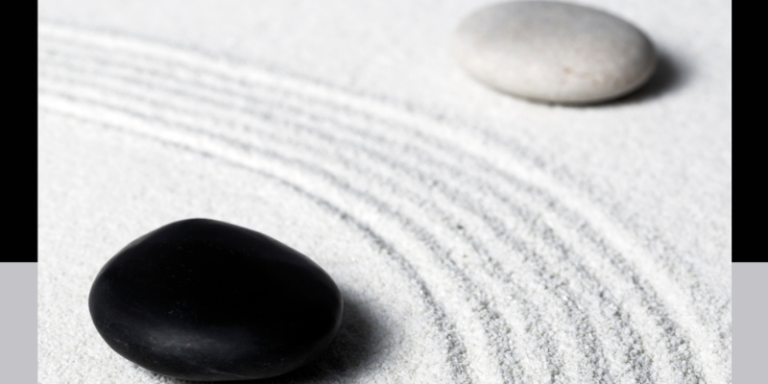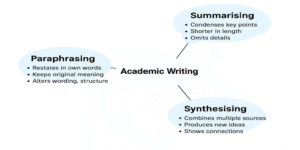In a world that often craves simplicity and definitive answers, embracing complexity allows us to navigate life’s intricate and sometimes contradictory realities. This approach involves acknowledging that ideal solutions are rare and that multiple perspectives and outcomes can exist simultaneously. As Amy C. Edmondson suggests in her work on learning behaviours, it’s essential to be open to new ways of thinking and leading in our personal and professional development (Edmondson, 1999). The notion of “Things That Can Co-Exist” illustrates how seemingly opposing ideas can work together harmoniously, enriching our lives in ways that a one-sided approach cannot. In this exploration, we will explore into several pairs of co-existing elements, highlighting their significance and the role of complexity in fostering a more balanced, enriched existence.
1.0 Growth and Mistakes
Growth is frequently viewed as a linear journey towards success, but the reality is far more nuanced. Growth and mistakes are deeply interconnected. Mistakes are not simply unavoidable; they are essential components of personal and professional development. Each error offers an opportunity to reflect, adapt, and improve. By embracing mistakes as part of the growth process, we cultivate resilience and foster a mindset that encourages continuous learning.
Carol S. Dweck, in her groundbreaking work Mindset: The New Psychology of Success, argues that adopting a growth mindset—seeing mistakes as learning opportunities rather than setbacks—can dramatically change how we approach challenges (Dweck, 2006). This perspective allows us to break free from the fear of failure, creating an environment where innovation and creativity can flourish. When growth and mistakes co-exist, they form a powerful catalyst for personal transformation.
2.0 Anxiety and Confidence
At first glance, anxiety and confidence might seem like polar opposites. However, confidence doesn’t mean the absence of anxiety. In fact, true confidence is often born from managing anxiety effectively. Anxiety is a natural response to new challenges and unfamiliar situations, but it can serve a productive purpose by motivating preparation and alertness. Rather than being a hindrance, anxiety can push us to rise to the occasion.
Confidence, then, grows from our ability to confront anxiety, not eliminate it. As Clark and Beck point out in Cognitive Therapy of Anxiety Disorders: Science and Practice, understanding the role of anxiety is crucial to building long-term confidence (Clark & Beck, 2010). When we embrace both anxiety and confidence as co-existing forces, we gain the strength to venture into the unknown, push our limits, and achieve our goals. This delicate balance allows us to grow while safeguarding our mental well-being.
3.0 Accountability and Self-Forgiveness
Accountability is often viewed as an essential aspect of personal integrity and professional success. It involves taking responsibility for one’s actions and decisions, which fosters trust and respect in relationships. However, without the counterbalance of self-forgiveness, accountability can become a double-edged sword, leading to excessive self-criticism and guilt.
Self-forgiveness is crucial for maintaining emotional health. It enables us to acknowledge our mistakes, learn from them, and move forward without being weighed down by regret or self-doubt. Brené Brown, in Rising Strong, highlights the transformative power of self-forgiveness in cultivating emotional resilience (Brown, 2015). When accountability and self-forgiveness co-exist, they create a healthy dynamic where we can hold ourselves to high standards without succumbing to destructive self-criticism. This balance fosters personal growth, emotional strength, and a more compassionate approach to life’s inevitable imperfections.
4.0 Learning and Unlearning
In today’s fast-paced world, the ability to learn new skills and concepts is often celebrated. Yet, equally important is the capacity to unlearn outdated or harmful beliefs and behaviours. Unlearning is not a passive process but an active and critical part of learning itself. It allows us to let go of preconceived notions and make room for new, more relevant knowledge and perspectives.
Peter Senge, in The Fifth Discipline, underscores the importance of creating learning organisations where continuous learning and unlearning are integral to innovation and growth (Senge, 1990). By embracing both learning and unlearning, we remain adaptable in a world that constantly evolves. This duality is crucial for personal and professional success, ensuring that we are not only acquiring new knowledge but also discarding ideas that no longer serve us.
5.0 Ambition and Contentment
Another complex pair is ambition and contentment. Ambition drives us to pursue goals, strive for improvement, and push beyond our comfort zones. Without ambition, progress stalls, and innovation fades. However, unchecked ambition can lead to burnout and dissatisfaction, especially when success is continually defined by external markers like wealth or status.
Contentment, on the other hand, provides the inner peace that comes from appreciating what we have and where we are in life. It allows us to enjoy the present moment without always striving for the next achievement. However, too much contentment can lead to complacency.
Balancing ambition with contentment is key to maintaining motivation while also cultivating a sense of fulfilment. By allowing these two states to coexist, we create a more sustainable and satisfying approach to life.
6.0 Vulnerability and Strength
Vulnerability is often mistaken for weakness, but in reality, it is a key source of strength. When we allow ourselves to be vulnerable, we open up to deeper connections, trust, and growth. Vulnerability involves the courage to admit our imperfections and uncertainties, which can strengthen relationships and foster mutual understanding.
According to Brené Brown’s research in Daring Greatly, vulnerability is the birthplace of innovation, creativity, and change (Brown, 2012). Strength is not about avoiding vulnerability; it’s about having the courage to be vulnerable in the face of life’s challenges. When vulnerability and strength co-exist, they empower us to face difficulties with both resilience and authenticity.
The theme of “Things That Can Co-Exist” reflects the complex nature of life and the human experience. By embracing complexity, we learn that growth can only occur through mistakes, that anxiety can fuel confidence, and that accountability must be balanced with self-forgiveness. Moreover, we recognise the importance of both learning and unlearning, ambition and contentment, and vulnerability and strength.
As Amy Edmondson’s research on psychological safety highlights, environments that embrace complexity—where individuals feel safe to express themselves, make mistakes, and engage in open dialogue—tend to foster higher levels of innovation, trust, and personal development (Edmondson, 1999). Embracing complexity allows us to transcend binary thinking and appreciate the full range of human experience. This holistic approach not only enhances personal and professional growth but also leads to a more fulfilling, resilient life.
By acknowledging and accepting the coexistence of seemingly contradictory elements, we become better equipped to navigate the multifaceted challenges of life. Ultimately, this approach enables us to live with greater balance, understanding, and success.
References:
Brown, B. (2015) Rising Strong: How the Ability to Reset Transforms the Way We Live, Love, Parent, and Lead. Spiegel & Grau.
Clark, D. A., & Beck, A. T. (2010) Cognitive Therapy of Anxiety Disorders: Science and Practice. Guilford Press.
Dweck, C. S. (2006) Mindset: The New Psychology of Success. Random House.
Edmondson, A. C. (1999) “Psychological Safety and Learning Behaviour in Work Teams”. Administrative Science Quarterly, 44(2), 350-383.
Senge, P. M. (1990) The Fifth Discipline: The Art & Practice of The Learning Organisation. Doubleday.









